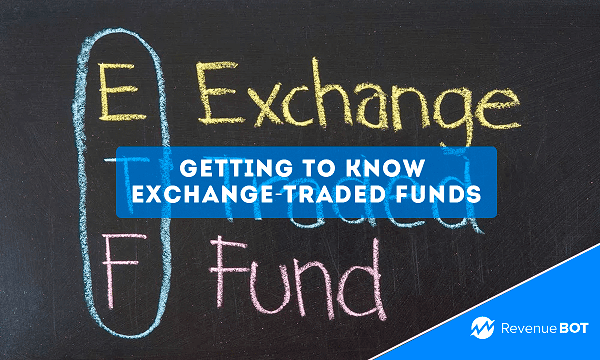
ETFs are a versatile investment vehicle that comes in many different forms. They provide access to a wide spectrum of assets and strategies, meeting all kinds of your tastes and objectives. You are free to choose from a range of such funds depending on the extent of investment risks and preferred financial goals.

In fact, ETFs offer various options for mitigating possible risks, boosting your income, investing in specific sectors, diversifying your portfolio and more. You can create a comprehensive one-of-a-kind portfolio that fits your specific investment plan by selecting the right type of ETF.
Definition
Such investment tools known as exchange-traded funds (ETFs), are traded on stock exchanges. What they do is empower investors to own a basket of assets like stocks, bonds, commodities or digital currencies, all within a single fund. They also offer a way to spread asset risk across various categories, including banking, technology, real estate and so on.
ETFs provide liquidity in addition to diversification. They can be bought and sold according to the market prices during the trading day, giving investors greater flexibility in their decisions. A key feature that sets ETFs apart from traditional mutual funds is their liquidity.
A specific subclass of ETFs called “crypto ETFs” offers exposure to digital currencies. Investors can own shares in any given fund with numerous digital assets rather than buying individual cryptocurrencies like Bitcoin. BTC or ETH can actually help lower risks. However, the regulatory environment for cryptocurrency ETFs is perplexing and differs by jurisdiction.

Say, Canada is clearly ahead of the game since it has approved several Bitcoin and Ether ETFs. What’s more, the first Bitcoin futures ETFs were approved by the United States Securities and Exchange Commission (SEC) back in October 2021, following years of intense anticipation and multiple denials of applications.
How do ETFs operate?
ETFs work through a simple mechanism involving several key steps, including:
Creating the fund
It all starts with a corporation (usually a financial institution or asset management firm), that decides to introduce an ETF. As the underlying holders of the ETF, they assemble a basket of assets that may consist of securities such as stocks, bonds, commodities or other instruments.
Getting regulatory approval
The sponsoring entity must get the green light from the SEC before an ETF can be listed. Regulatory organizations make sure the ETF abides all applicable laws and regulations.
Issuing and redeeming ETFs
ETF shares are issued and redeemed via a certain method that involves so-called authorized participants (APs). These include large financial institutions or market makers that have been granted permission to take part in the process.
An AP gathers all the necessary assets (which are often in-kind) and delivers them to the ETF issuer in order to establish fresh shares of the ETF. In exchange, they get a certain number of ETF shares. On the other hand, when an AP wants to redeem ETF shares, they give the shares back to the issuer and get the underlying assets.
Trading ETFs on stock exchanges
Once these shares have been formed and are held by investors, ETFs are then traded on stock exchanges, much like individual equities. During regular trading hours, investors can buy and sell ETF shares at market rates. Investors benefit from the liquidity and flexibility this offers.

At the end of each trading day, the funds determine their net asset value. This is calculated by dividing the fund’s total asset value (TAV) by the number of outstanding shares. Due to the creation and redemption processes, the market price of the ETF shares is usually fairly close to the net asset value (NAV).
An arbitrage mechanism can be used to keep the market price of the ETF in line with its NAV through the issuing and redeeming. The previously mentioned APs may now purchase or redeem shares when the ETF’s market price diverges from its NAV to profit from price discrepancies and keep the market price of the ETF around its NAV.
And what about the types of ETFs?
ETFs can be divided into traditional and crypto ETFs. Exchange-traded funds that offer exposure to different asset classes, such as equities, bonds and commodities, are called traditional or conventional ETFs. Each of these tracks and offers exposure to traditional financial products and markets in accordance with the traditional model.
At the same time, crypto ETFs are a relatively new phenomenon, consisting of a specific category of exchange-traded funds that offer access to digital currencies like Bitcoin or a bunch of other cryptocurrencies. Conventional ETFs are more established and provide a broader selection of conventional asset classes and investment methods.
Conclusion
ETFs offer a plethora of benefits. They lower risk by enabling investors to distribute their funds among a variety of assets, which offers diversification. Because ETFs are highly liquid, investors can purchase or sell shares effortlessly. One noteworthy advantage of ETFs is their transparency; they reveal their holdings every day, making it possible to make well-informed investment decisions.
